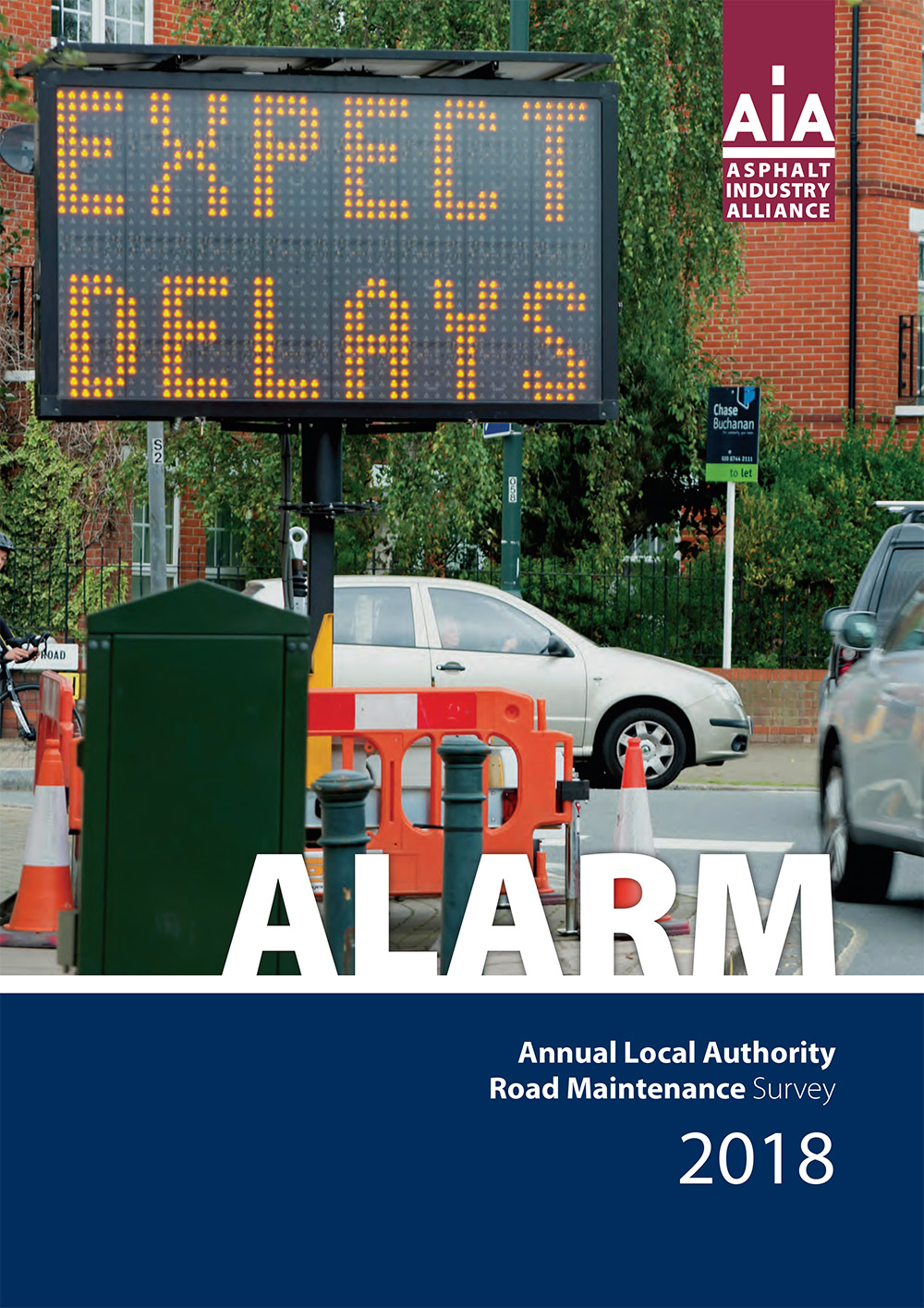You could drive almost around the world on the length of roads in England
and Wales that could fail if they are not fixed in the next 12 months, reports
this year’s Annual Local Authority Road Maintenance (ALARM) survey,
published today (20 March 2018).
Cash-strapped local authorities report that more than 24,400 miles of road
are identified as needing essential maintenance in the next year.
The ALARM survey, produced by the Asphalt Industry Alliance (AIA) and
now in its 23rd year, is widely respected throughout industry and local and
national government as the most authoritative and comprehensive study
into local road maintenance funding and condition.
This year local authorities in England and Wales report that the gap
between the funds they received and the amount they actually needed
to keep the carriageway in reasonable order was almost £556 million – a
shortfall of £3.3 million for every authority. And, it would now take 14 years
to get local roads back into a reasonable steady state, provided adequate
funds and resources were available.
Rick Green, Chairman of the AIA, said: “Although local authorities report
an increase in average highway maintenance budgets this year, looking
back over the last decade they have barely kept in line with inflation. This is
reflected in road condition, with one in five of our local roads now classed
as structurally poor – with less than five years’ life remaining – compared
with one in six reported last year.
“Local roads are a vital asset, worth in the region of £400 billion, and they
support all aspects of our daily work and home lives. But funding for their
adequate maintenance has fallen short for so many years that further
deterioration is inevitable.
“We accept that there is no magic wand to wave, nor is there a bottomless
pot of money to tap into. There are difficult choices to be made at both
local and national level but the government needs to provide adequate
funding for a well maintained and safe local road network if it wants to
support communities and drive economic growth.”

 CONTACT US
CONTACT US SUBSCRIBE
SUBSCRIBE FOLLOW US
FOLLOW US LINKEDIN
LINKEDIN